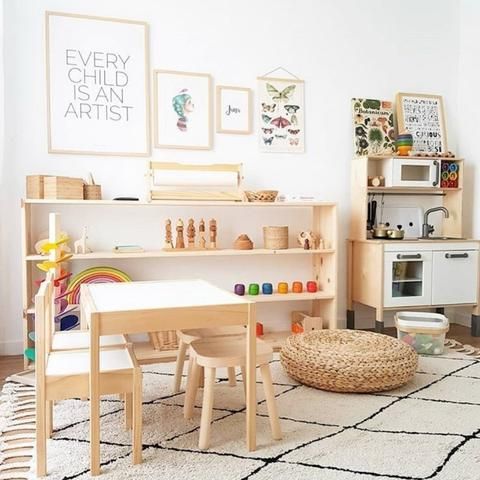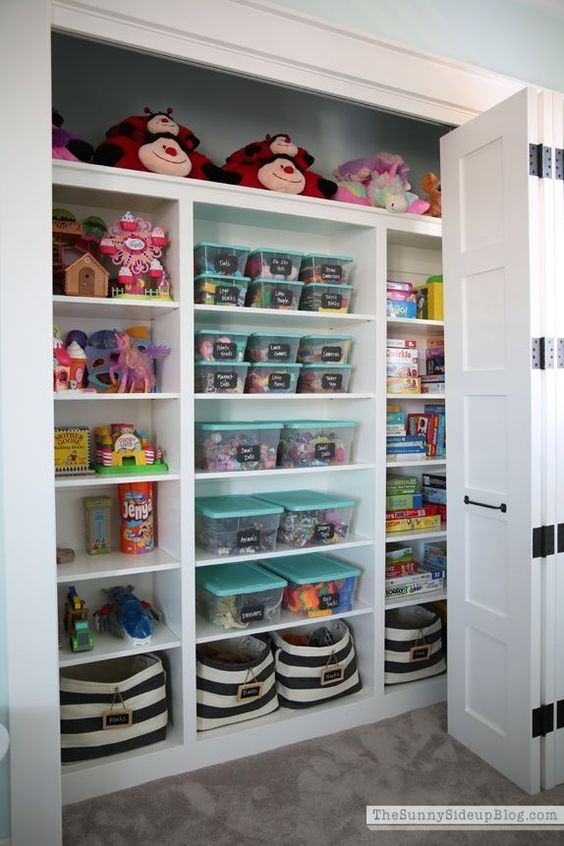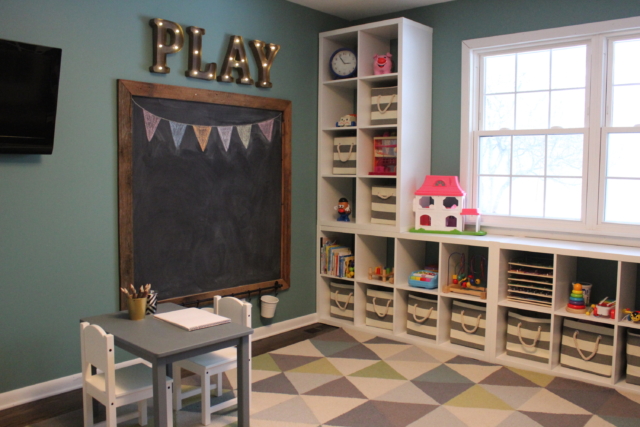There’s arguably nothing more challenging for the house-proud than the arrival of a baby. It’s always astounded me just how much little ones accumulate and it only seems to get worse as they head into the toddler years and beyond. For me, whether your toy area is a dedicated room (lucky you!) or simply a corner of the living area, storage and organisation is key in maintaining some semblance of order in the home. And this is a sentiment shared by professional declutter Jo Carmichael of All Sorted Out who shares seven secrets for creating a clutter-free kids environment.

Storage
“Getting the toys and games up off the floor is step one. If there isn’t a built in cupboard to use in this space, line book shelves or cube storage along one wall. The different shelf heights means you can easily see and find things. Also, placing a combination of clear plastic or cane baskets onto the shelves or into the cubes, keeps the toys from becoming jumbled,” says Jo who recommends using the top of the shelves to display the big chunky toys.
Like with like
“Group the toys and games into the tubs as per a ‘like with like’ system. For example, you should put all the toy cars, figurines, blocks, animals and transport toys into their own separate tubs. If your kids play with cars and trucks together it makes sense to group them in one tub. If there’s volume, maybe separate transport into small and large pieces,” says Jo.
Zones
“Create a ‘chill’ area with book shelving attached to the wall, from the ground level up. Have pillows, bean bags and a soft rug there for both kids and adults to lie on and read books or turn pages. This is where learning to read can start when they are only a baby,” says Jo.

“Make a bench area – something like a toy box or chest at approximately 70 cm high would suffice. Pre-schoolers can stand at it to do a puzzle or construct something but it’s also just out of reach of a crawler or younger toddler. With a lid that opens, this bench can also provide storage for bulky toys or ones not in current rotation,” says Jo.
Create
If space allows, a low table and chair set is a great addition to the toy area and is a good spot to store stationery – try looking for one with built-in storage in the table top or drawers beneath. “This could even be a coffee table with chunky stools, which has pots of pencils, crayons, craft scissors, pads of paper and pots of Play-Doh at the ready. Keep messy paints out of reach until an adult can supervise. This is a place where they can learn to enjoy writing, scribbling and making,” says Jo.

Labels
“Labels are key to keeping both the toys and the space organised. You can hand write or draw the words describing the contents of each container. Choose a large font so it’s easy to read, as this is a way to introduce reading to your little ones too. Labels remind young and old where to find something and where to put it back,” says Jo.

Pack away
“The secret to keeping the toy room a fun place is to introduce ‘pack away’ time. Make it as fun and musical as you can. Shake a tambourine or put on a favourite song to herald the time,” says Jo who recommends doing this before the next activity or meal to keep on top of the mess throughout the day.
“Keep snacks or meals as a reward for having returned the toys to the correct tubs.
If a construction or game isn’t completed and you know there is still time to play with it later, then put this aside to be finished. When we learn to put things back, we also teach our little ones life skills,” says Jo.

“If the toy room ends up in a crazy state after visitors or a busy play date, maybe the next play time could be spent resorting it all back into the tubs,” says Jo who recommends making a game of it by asking them what each toy is called and then helping them find the appropriate tub. “They can then toss the toys back into the tubs with a sense of achievement too. The less clutter the more fun!”









